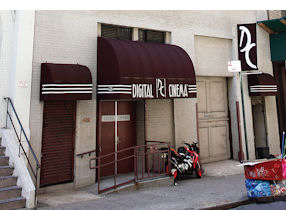As if California isn’t being hurt already by runaway feature film and television productions – other states are now going after post-production with specialized tax incentives. New York and New Mexico are among the first states to offer stand-alone tax credits for editing, sound mixing, visual effects and other post functions regardless of whether the productions were made in those states. Legislation is pending in Oregon to allow post houses to apply for that state’s incentive program. While California’s film tax incentive program does include the cost of post-production work, there is no separate program as those other states have. “There has been talk about modifications, but there are no specifics because it is all in flux,” said California Film Commission Director Amy Lemisch. Post-production can account for 10 percent of a film’s budget, with that figure jumping to 40 percent for visual effects-heavy films, said Joe Chianese, executive vice president with Entertainment Partners Financial Solutions, a division of Burbank-based Entertainment Partners that coordinates film tax incentive programs for its clients. If California is going to stay competitive with what other states and even other countries offer, lawmakers need to decide if they value the industry enough to make sure the post work stays, Chianese said. “If not, they can continue to do nothing and watch it go away,” he added. Many digital- and visual-effects companies headquartered in the Los Angeles area or with major operations here have also opened in places, such as Vancouver, British Columbia, which offers incentives for post-production services. Scanline in Los Angeles, Sony Pictures Imageworks headquartered in Culver City, Digital Domain in Los Angeles, and the bankrupt Rhythm & Hues Studios Inc. in El Segundo, all opened in Vancouver in recent years. So has Disney’s Pixar animation studio, which has its main office in Emeryville. Big Apple Warner Bros. Studios, based in Burbank, looked east and found an existing post facility that became its New York location for audio post-production. The studio installed a custom console and digital projector and eight new design and picture-editing suites, said Kim Waugh, senior vice president of post-production services. The midtown Manhattan facility, which opened early this year, is a joint venture with Digital Cinema LLC, a division of Sync Sound Inc., an audio post company in New York. Warner Bros. made the investment not just for the monetary savings through the tax-credit program but for the post talent already operating in New York, which is the largest hub for film and television production, Waugh said. “We wanted to be in a position so our creative talent can continue their relationships with filmmakers,” Waugh said. The New York post incentive program became law last July. Within six months, 34 productions applied for the credits, including projects that filmed in other states. The program offers a 30 percent credit on post work done in the New York metro region, and a 35 percent credit for work done in upstate New York to encourage construction of new facilities. The number of applicants is evidence the state is making a smart investment to attract businesses and create jobs, said New York Gov. Andrew M. Cuomo in a statement earlier this year touting the program’s success. “Let this progress be an invitation for other productions to come to the Empire State, the future television and film capital of the world,” Cuomo said. The New Mexico program is a 25 percent refundable tax credit for productions shot and edited in the state or shot elsewhere but using in-state post facilities. Chianese said that as long as there are states offering incentives for post-production work shot in another state there is no reason to bring that work back to California. “I’d hate for us to wake up ‘x’ years down the road and look like Detroit with the (diminished) auto industry,” Chianese said. Marty Shindler, an entertainment industry consultant in Encino, said the key to how well other states draw post work is in the quality of the editors, color correctors, mixers, and special and visual effects artists. The post-production infrastructure doesn’t establish itself overnight once a state begins hosting productions. Los Angeles still has an advantage because of the depth of talent, despite other states chipping away at it, he said. However, if big studios and post houses starting setting up in other states, that is another matter. “If Warner Bros. opens a facility, they can attract the people,” Shindler said. “They have significant crew depth and have in-house producers to bring the TV and feature film work to that facility.”
